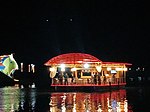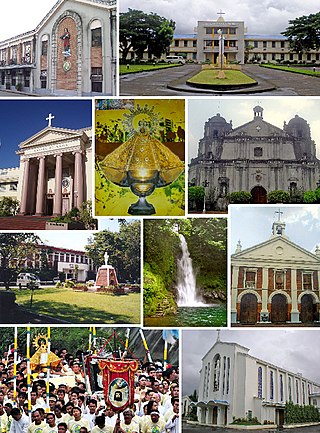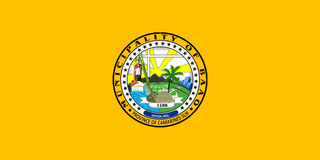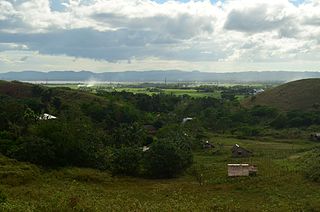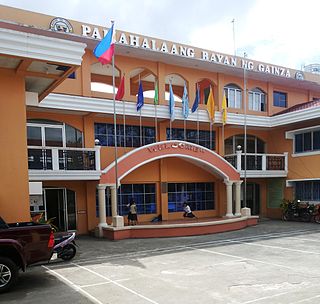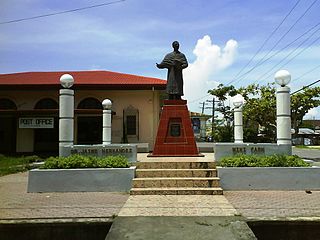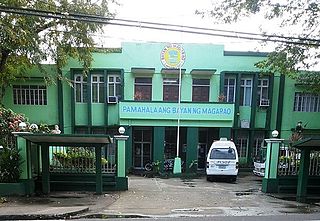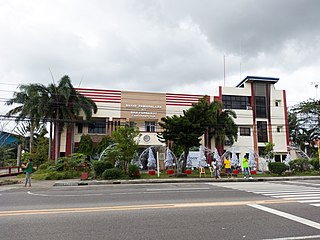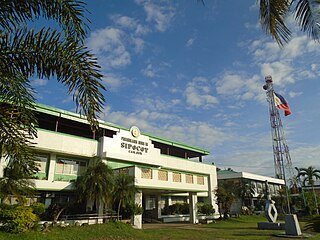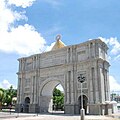Camaligan | |
|---|---|
| Municipality of Camaligan | |
 | |
| Etymology: Tagalog: kamalig + an ("place of sheds") | |
| Nickname: The Small Town with a Big Heart | |
| Anthem: Camaligan Kong Namomótan My Beloved Camaligan | |
 Map of Camarines Sur with Camaligan highlighted | |
Location within the Philippines | |
| Coordinates: 13°37′15″N123°09′56″E / 13.6208°N 123.1656°E | |
| Country | Philippines |
| Region | Bicol Region |
| Province | Camarines Sur |
| District | 3rd district |
| Founded | 1795 1900 (Annexed to Nueva Caceres), 1909 (re-independence) |
| Barangays | 13 (see Barangays) |
| Government | |
| • Type | Sangguniang Bayan |
| • Mayor | Diano S. Ibardaloza, Jr. (PDPLBN) [2] |
| • Vice Mayor | Josefina N. Asor (PDPLBN) (Acting) [3] |
| • Representative | Gabriel H. Bordado Jr. (Liberal) |
| • Municipal Council | Members |
| • Electorate | 16,233 voters (2022) |
| Area | |
| • Total | 4.68 km2 (1.81 sq mi) |
| Elevation | 4.0 m (13.1 ft) |
| Highest elevation | 24 m (79 ft) |
| Lowest elevation | −3 m (−10 ft) |
| Population (2020 census) [5] | |
| • Total | 25,036 |
| • Density | 5,300/km2 (14,000/sq mi) |
| • Households | 5,353 |
| Demonym(s) | Camaligueño (masculine) Camaligueña (feminine) |
| Economy | |
| • Income class | 4th municipal income class |
| • Poverty incidence | 17.44 |
| • Revenue | ₱ 87.14 million (2020) |
| • Assets | ₱ 235.1 million (2020) |
| • Expenditure | ₱ 76.16 million (2020) |
| • Liabilities | ₱ 61.19 million (2020) |
| Service provider | |
| • Electricity | Camarines Sur 1 Electric Cooperative (CASURECO 1) |
| Time zone | UTC+8 (PST) |
| ZIP code | 4401 |
| PSGC | |
| IDD : area code | +63 (0)54 |
| Native languages | Central Bikol Tagalog |
| Feast date | June 13 (Poblacion) |
| Catholic diocese | Archdiocese of Caceres |
| Patron saint | St. Anthony of Padua, St. Teresa of Calcutta |
Camaligan, officially the Municipality of Camaligan (Central Bikol : Banwaan kan Camaligan; Tagalog : Bayan ng Camaligan), is a 4th class municipality in the province of Camarines Sur, Philippines. According to the 2020 census, it has a population of 25,036 people. [5] Camaligan rapidly became an urban town during the 1990s.
Contents
- Etymology
- History
- Pre-colonial era
- Spanish era
- American era
- Geography
- Barangays
- Climate
- Demographics
- Economy
- Government
- Culture
- Festivals
- Tourism
- Archaeology
- Education
- High school
- Elementary schools
- Preschools
- Notable personalities
- References
- External links
Camaligan is part of the Metro Naga Urban Area.
The town is home to the oldest known pre-colonial site in the Bicol region, dating 500 AD to 600 AD, making it an undeclared important archaeological zone. [7]






